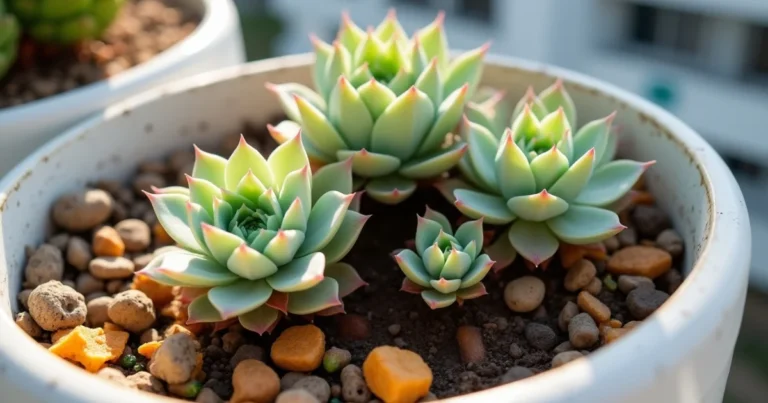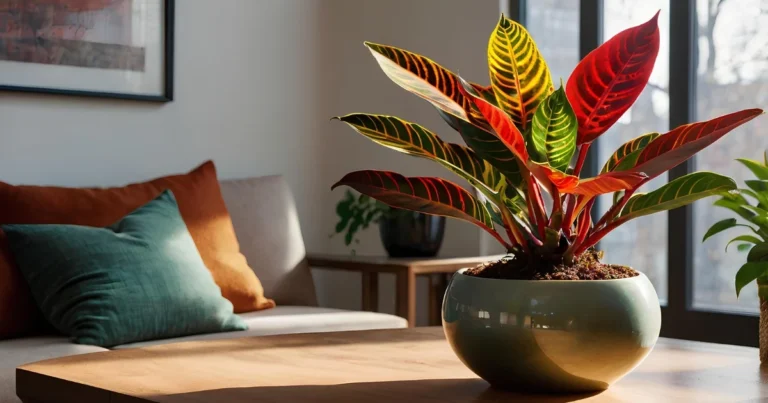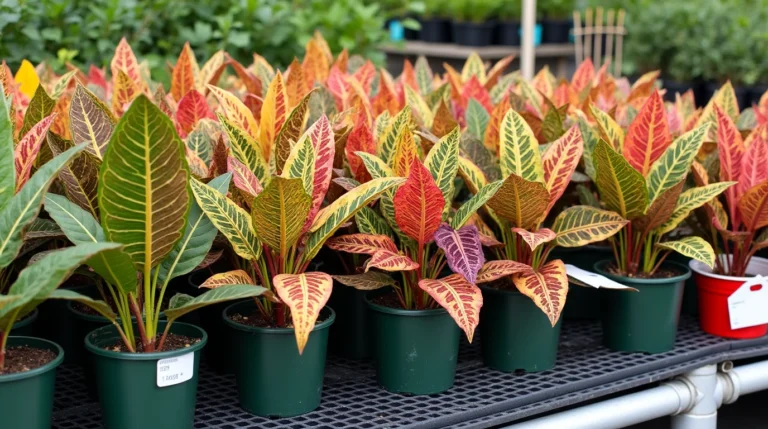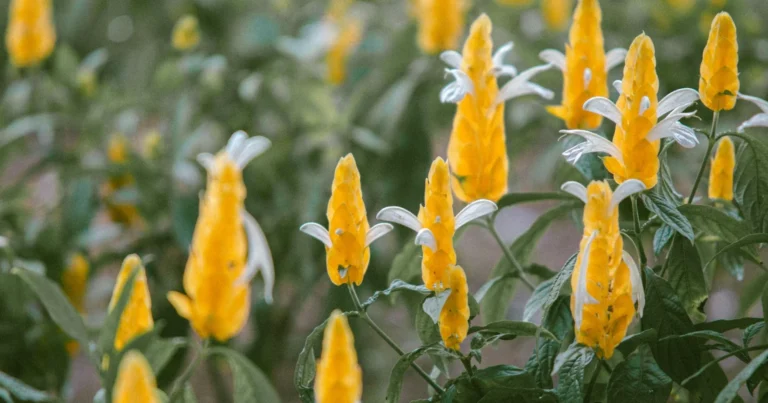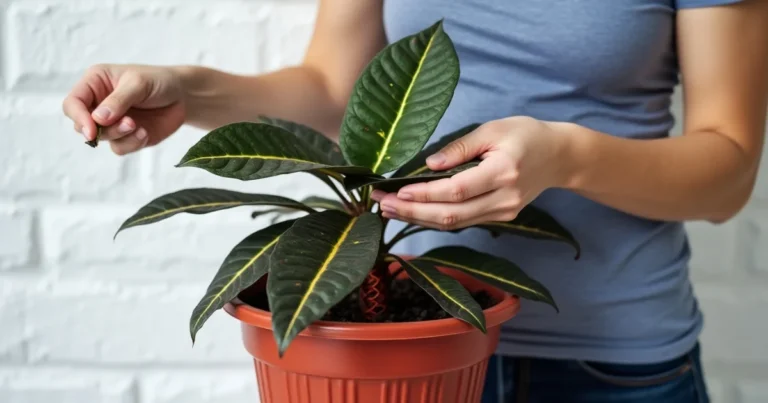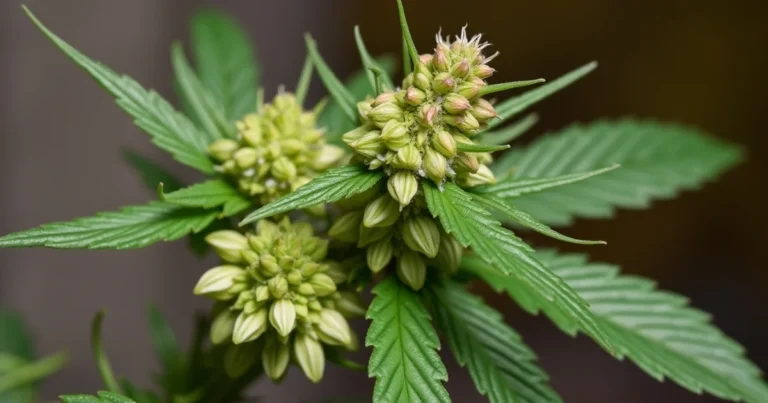White Bird of Paradise Plant: Stunning Secrets for Bold Growth in 2025
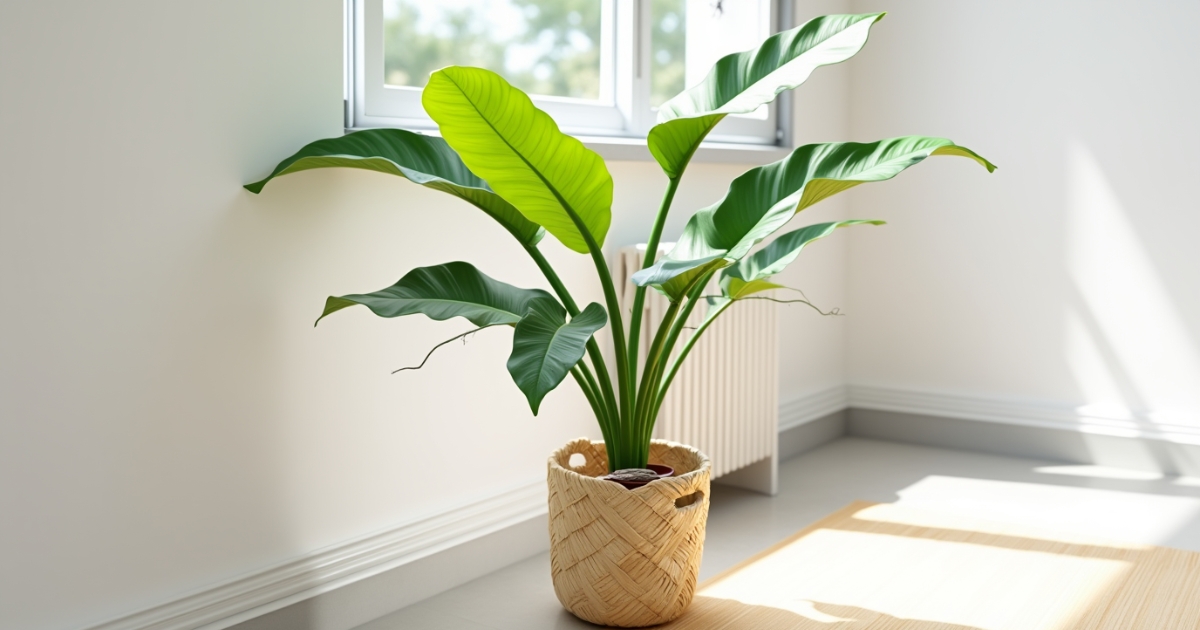
The white bird of paradise is ideal if you search for a tropical and fashionable plant. Its great height and fan-shaped leaves really make it a show stopper. Coming from South Africa, loving sunlight and warmth, it gives any space or yard a hint of the tropics.
This plant is well-known for its arresting appearance, which gives any area drama. Modern décor loves it for its white blossom and beautiful green leaves. Whether you know a lot about plants or not, you may help them to be robust and vivid.
Table of Contents
Introduction to the Majestic White Bird of Paradise Plant
The white bird of paradise plant originated in coastal woods of South Africa. It favors sun-dappled, damp areas. Often referred to as Strelitzia nicolai, this tropical giant depends on moderate temperature and rainfall. This understanding guides our home care of it.
Origin and Natural Habitat
This plant grows amid palm palms and ferns in regions like KwaZulu-Natal. Its roots manage well-drained soil and its large leaves allow in dappled sunshine. Knowing where it comes from helps us make it flourish either indoors or outside.
Distinguishing Features of the White Bird of Paradise
- Leaves: Glossy, paddle-shaped foliage creates a rich canopy up to 10 feet wide.
- Flowers: Creamy white and sky-blue blossom mimic soaring birds, so guiding the name.
- Size: Growing 20 to 30 feet tall in nature, he stays 5 to 10 feet in containers.
Why This Statement Plant Is Growing in Popularity
| Feature | Trend Connection |
|---|---|
| Architectural foliage | Matches modern minimalist design |
| Rare white blooms | Stands out in greenery collections |
| Low maintenance needs | Suits busy homeowners |
Interior designers love its tropical flair for open spaces. The white bird of paradise presents a fresh contrast unlike the orange Strelitzia reginae. Those who prefer long-lasting décor would find its Slow growth rate ideal.
White Bird of Paradise Plant Varieties and Species
Exploring the white bird of paradise plant family can be confusing. There are many similar-looking species. Let’s look at the differences to help you pick the right one for your space.
- Large Bird of Paradise (Strelitzia nicolai): Can grow outdoors up to 30 feet tall. It boasts really beautiful blue and white blossoms. Its 6 foot-reaching wide leaves set it apart in large gardens.
- Orange Bird of Paradise (Strelitzia reginae): This variety is smaller than the white one. It has vibrant orange-and-blue flowers. It’s perfect for patios or sunrooms where space is tight.
- Strelitzia augusta: This rare white-flowering species has cream petals. It thrives in humid climates. Its leaves are more delicate than the large bird of paradise.
Compact cultivars like Strelitzia nicolai ‘Lilliput’ are a smaller version of the white bird of paradise plant. They grow only 3–5 feet tall. These are great for indoor spaces with the right pruning. Always check the plant tags to confirm the species. Some retailers might mislabel them, leading to surprises.
Ask local nurseries about the plant’s adaptability to your area. The large bird of paradise needs outdoor space in USDA zones 9–11. Smaller types are better for indoor setups. Knowing these differences helps you choose the right plant for your climate and space.
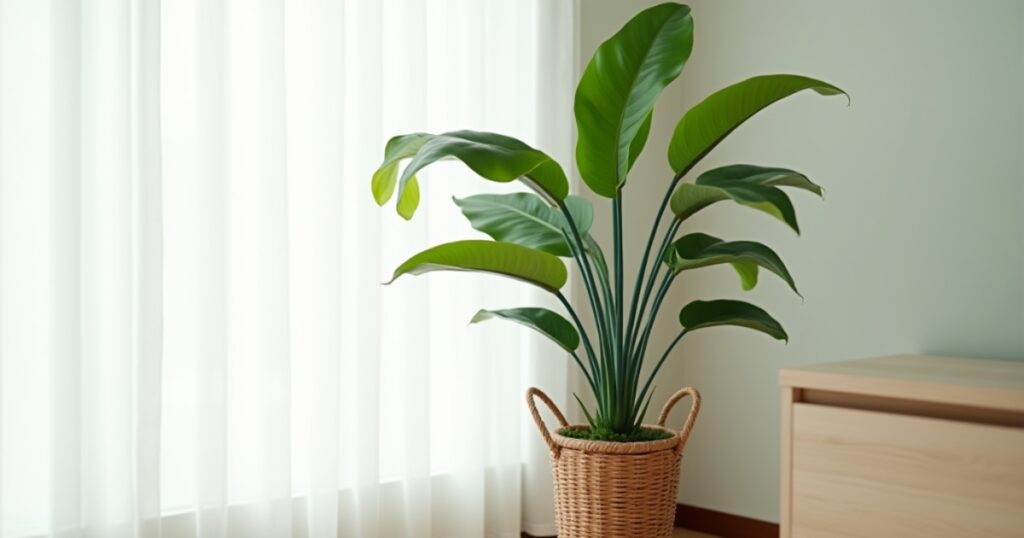
Essential Growing Conditions for Thriving Plants
Creating the right environment is vital for your white bird of paradise plant care. We’ll cover the four main areas: light, climate, soil, and space.
Ideal Light Requirements
These tropical plants love bright, indirect light. Position them near east- or north-facing windows to prevent leaf burn from direct sun. If your home lacks natural light, use LED grow lights for giant white bird of paradise plant varieties that need more energy.
Temperature and Humidity Needs
Keep temperatures between 65°F and 85°F to mimic their native South African climate. Avoid cold drafts and temperatures under 50°F, as they can slow growth. Increase humidity with weekly misting or a pebble tray to help the plant thrive, even in dry indoor spaces.
Soil Composition and Drainage
Choose a mix of 2 parts peat-based potting soil, 1 part perlite, and 1 part compost. This mix holds moisture but prevents root rot. Check drainage by ensuring water drains through the soil within 30 minutes of watering.
Space Requirements for Mature Growth
Plan for the future! The giant white bird of paradise plant can grow 6–10 feet wide indoors. Outdoors, it can reach over 30 feet. Give it 3–4 feet of space around it for air circulation and leaf growth. Repot every 2–3 years into larger containers to support its root system.
White Bird of Paradise Care Indoor: Creating Tropical Drama
Make your space pop with the white bird of paradise indoor plant. It’s a showstopper that needs the right spot. It loves attention to its position, container, and seasonal needs. Here’s how to create a lush, stress-free space for it.
Positioning Your Indoor White Bird of Paradise
Put your plant where it gets noticed but doesn’t block the way. A bird of paradise plant care indoor guide suggests placing it near big windows for soft light. But, avoid direct sun to prevent burning.
- Corner spots for a dramatic look
- Rotate the plant weekly for balanced growth
- Keep it 6–8 feet from windows for the right light and space
Container Selection and Potting Techniques
Pick pots that look good and work well. Ceramic pots are fancy but heavy, perfect for permanent spots. Plastic pots are lighter but less stylish. Here are some tips:
- Choose a pot 2–3 inches wider than the root ball
- Make sure it has drainage holes to avoid root rot
- Use a mix of peat moss and perlite for air and moisture
Seasonal Care Adjustments
Change your care routine with the seasons. In winter, water less and keep it away from cold drafts. In summer, it grows more, so:
- Mist the leaves weekly to add humidity
- Monitor the soil moisture by using your finger or a moisture meter.
Use humidity trays or group plants to fight dry air. A small humidifier near the plant adds moisture without too much water.
Outdoor Growing Guide for Giant White Bird of Paradise Plants
If you live in USDA zones 9-11, growing the giant white bird of paradise plant outdoors is a treat. These plants can reach heights of 20 to 30 feet, making them a stunning focal point in your garden.
Select a location with plenty of sunlight and soil that drains effectively, as inadequate drainage can damage the roots.
Proper site preparation is essential. Dig holes that are twice as wide as the root ball to allow the roots to spread. Enrich the soil with compost or pine bark. Then, apply a 3-4 inch layer of organic mulch around the base to retain moisture and prevent weeds.
- Space wisely: Plant them 10-15 feet apart to allow for growth.
- Wind protection: Use fences or tall trees to protect them from strong winds.
- Winter prep: In cooler zones, mulch heavily before cold weather and use frost cloths.
| Season | Care Focus |
|---|---|
| Summer | Water deeply once weekly during dry spells. Prune dead leaves to keep shape. |
| Winter | Water less often. Watch for frost damage and re-mulch as needed. |
Use these plants as privacy screens or eye-catching features. They thrive in partial shade but require over 6 hours of morning sunlight. Feed with balanced fertilizer in the spring and summer to promote healthy growth. With the right white bird of paradise care outdoor, they’ll be a long-lasting part of your garden.
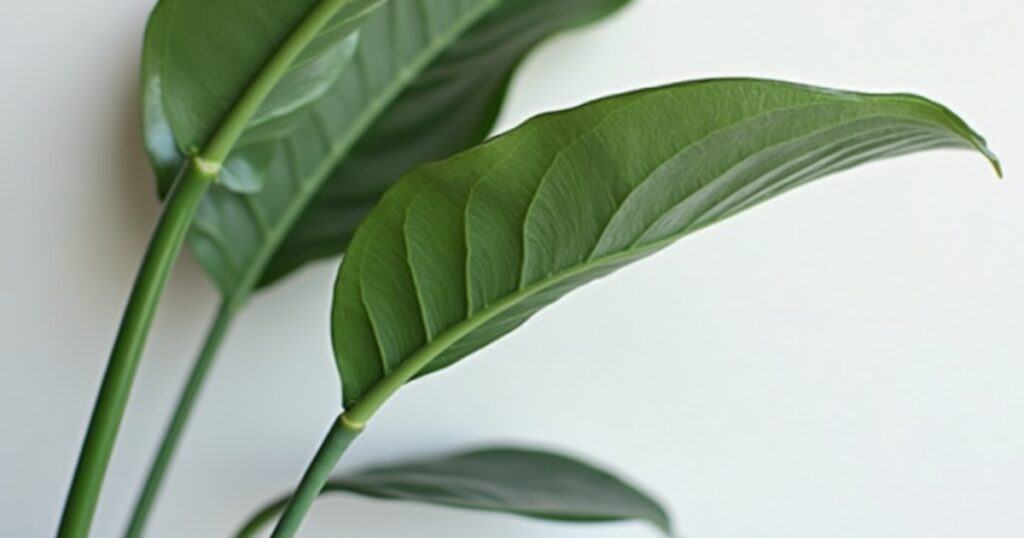
Watering and Fertilizing Your Bird of Paradise Plant White Variety
Getting the right amount of water and nutrients is key for the white bird of paradise care indoor or outside. We’ll look at how to keep your bird of paradise white healthy with the right amount of water and food.
Watering Schedule and Techniques
Water thoroughly, but not too frequently. Hold off on watering until the top inch of your soil feels completely dry. This helps prevent root rot. If you have a saucer under your indoor plant, empty it after 30 minutes to avoid wet roots. In winter, water less often because your plant grows slower.
- Water deeply until it begins to drain from the bottom of the pot.
- Monitor the soil moisture by using your finger or a moisture meter.
- Avoid misting leaves to reduce fungal risks.
Fertilizer Types and Application Methods
Feed your bird of paradise white with a balanced 10-10-10 NPK fertilizer. Dilute it to half strength and apply every 6–8 weeks in spring and summer. For organic choices, use compost tea or fish emulsion. These boost micronutrients without harming roots. Don’t feed as much in fall and winter.
Signs of Improper Nutrition
Watch for these indicators that your plant requires a change:
- Yellow leaves: Overwatering or too little nitrogen.
- Brown tips on leaves: This may indicate insufficient watering or excessive fertilizer.
- Pale new growth: Needs more iron, so use a nutrient-rich feed.
Address these issues promptly to resolve them and maintain your plant’s health.
Troubleshooting Common White Bird of Paradise Issues
Even with the right white bird of paradise plant care, problems like pests or diseases can happen. This section guides you on how to spot and fix these issues before they damage your plant.
Pest Management Strategies
Look for white Bird of Paradise leaves showing tiny webs or sticky residue, which are signs of spider mites or scale. To treat:
- Use insecticidal soap sprays for visible pests
- Apply neem oil weekly to stop pests from reproducing
- Keep infected plants away from others to stop the spread
Regularly wiping leaves can help remove eggs and debris.
Disease Prevention and Treatment
Yellow leaves or soft stems mean your plant is getting too much water, leading to root rot. Change how often you water and repot in fresh, draining soil. For fungal problems like leaf spot or powdery mildew:
- Remove and throw away any affected parts
- Give plants more space to improve air flow
- Try copper-based fungicides if problems keep coming back
Addressing Growth and Flowering Problems
If your plant isn’t blooming, check if it’s old enough (they bloom in 4-6 years). White bird of paradise indoor plant might not bloom if it’s too crowded or doesn’t get enough light. Prune old fronds to promote new growth and keep it in a room with steady temperatures.
Remember, these tropical plants do best with consistent white bird of paradise plant care and catching problems early.
Propagation Methods for Expanding Your Collection
Starting a new collection of white bird of paradise flower begins with learning how to propagate. The simplest method is division, which is best done in spring. This is when the roots are most active. Here’s how to do it:
- Divide rhizomes: Carefully dig up the plant and look for natural breaks in the roots. Use clean scissors to split the sections, making sure each has roots and a growing tip.
- Plant immediately: Put the divided parts into fresh potting mix that drains well. Water them well and keep them out of direct sunlight for a week.
Seed propagation is another option, but it takes time. Seeds can take 3–6 months to sprout and might not look like the parent plant. To try, plant seeds in peat pots, keep the soil moist, and wait 2–3 years for the first large bird of paradise blooms.
Offshoots, or pups, grow from the base of mature plants. Wait until they’re at least 6 inches tall before cutting them off. Plant them in 4-inch pots and watch the moisture closely. New plants need a lot of humidity—cover with a clear plastic bag for a month, then slowly remove it.
After dividing, keep the soil a bit moist but not too wet. Mist the pups every day and don’t fertilize for 6 weeks. Once they’re settled, treat them like full-grown plants. They need bright, indirect light and warm temperatures. With proper care, your new white bird of paradise flower clones will bloom in 12–18 months.
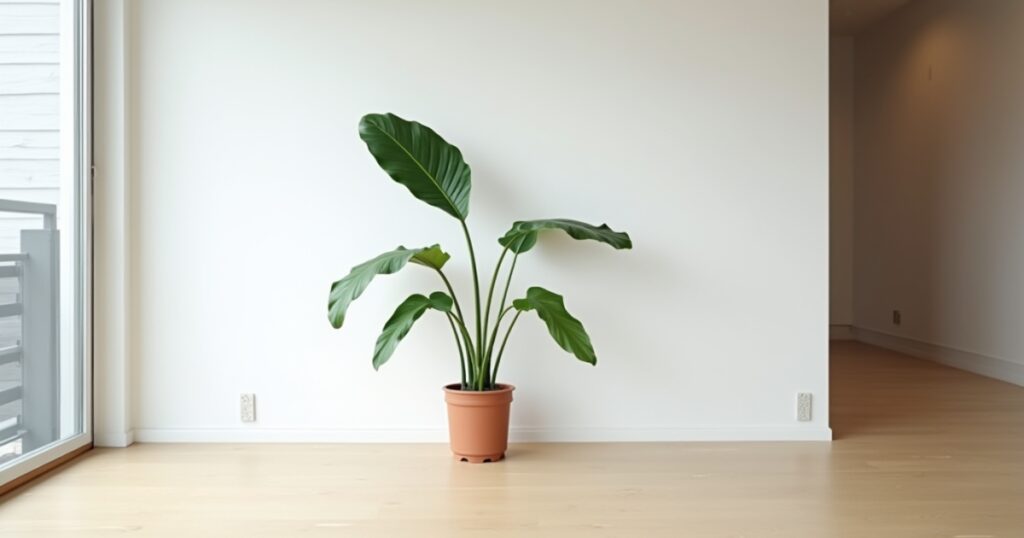
Conclusion: Enjoying the Dramatic Beauty of Your White Bird of Paradise
With the right care, the white bird of paradise turns any space into a tropical paradise. It thrives in sunlight or indoors, showing off its bold leaves and exotic flowers. This plant can live for decades with the right care.
Try placing it in different spots to show off its unique leaves. Indoors, it looks great with modern furniture. Outdoors, it adds beauty to your entrance. Make sure the soil drains well and adjust care with the seasons. Regular checks for pests and nutrients keep it healthy.
As it grows, its white and blue flowers will catch everyone’s eye. Share your gardening tips or post pictures of its growth. This plant can make any space, from Florida to Chicago, a work of art.

